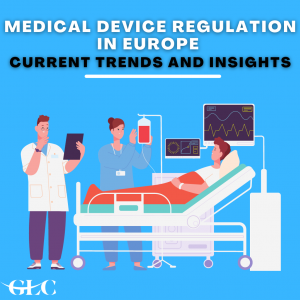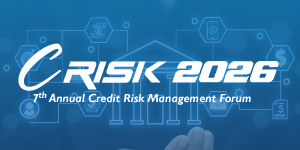Free knowledge to monitor the world of events. Have a look at our must read Blogs on Pharma, Finance, HR, Health and Cross Industry.
Medical Device Regulation in Europe
2022-08-16
Medical device efficacy and safety have always been of utmost significance in Europe.
Medical Device Regulation in Europe: Current Trends and Insights
Medical device efficacy and safety have always been of utmost significance in Europe. The legal system governing medical devices has, however, experienced a fundamental transformation since the Medical Device Regulation (MDR) 2017/745 was introduced. Here is a detailed analysis of the primary aspects of this rule.

MDD to MDR Transition: The Whys and Hows
The shift from the Medical Devices Directive (MDD) to the Medical Device Regulation (MDR) wasn’t just a procedural change; it was a response to the rapid advancements in medical technology and the need for more stringent controls. While the MDD was directive-based, meaning it needed transposition into national laws, the MDR is a regulation, making it directly applicable in all member states. This offers a more consistent and clear regulatory landscape across the EU.
Notified Bodies: The Gatekeepers of MDR
Notified Bodies (NBs) now have greater power and obligation because to the MDR. To ensure ongoing compliance, they now have the power to perform unauthorized inspections, require technical documentation, and perform physical or laboratory tests on equipment. Due to the stricter standards under the MDR, there are fewer NBs, which results in a more centralized and controlled system.
Focused Attention on High-Risk Devices
The necessity for more stringent regulation was made clear by the issues associated with some high-risk devices (such as the debates over specific types of breast implants). High-risk devices are subject to a more thorough assessment procedure under the MDR. This includes the requirement of expert panels for the use of specific devices, guaranteeing that their performance and safety claims are supported by an objective and expert evaluation.
Post-market Surveillance: The Lifelong Monitoring
The MDR places emphasis on the whole lifecycle of the product in addition to the pre-market approval procedure. Manufacturers are now required to gather data after the product has been released in order to spot any potential safety issues. This ongoing feedback loop guarantees the early identification of problems and emphasizes the dedication to long-term patient safety.
Bridging the Digital Gap with Software-Based Medical Devices
Regulations must address this aspect as digital health solutions play a bigger role in contemporary healthcare. Based on its intended use, software may be classified as a medical device under the MDR. As a result of this classification, apps and software that aim to directly affect a patient's health, prescribe a course of treatment, or diagnose an illness would be covered by the MDR.
EUDAMED: A Revolution in Transparency
EUDAMED is more than merely a database. The public and other stakeholders can access information on medical devices through this multi-module portal. Because of this openness, patients, medical practitioners, and researchers may make wise decisions based on the information at hand.
Patients' Safety Net with Traceability Using UDI
Every medical device's history can be tracked using the Unique Device Identification (UDI) system. Through this traceability, it is made possible to quickly and precisely recall any problematic batches or products, shielding patients from any injury.
Regulation of in vitro diagnostic testing (IVDR): Going Beyond MDR
Although closely related, the IVDR differs from the MDR in that it focuses on in-vitro diagnostic tools. Similar to the MDR, the IVDR tightens the regulatory net by requiring stronger clinical justification and more stringent inspection.
‘Numerous instances throughout the years have brought to light the urgent need for more stringent medical device regulations in Europe. The breast implant scandal, in which the manufacturer used unapproved industrial-grade silicone and put over 300,000 women globally at risk, was one of the most obvious examples. Many of these women reported ruptures and other issues. This episode raised concerns about the efficacy of Notified Bodies and exposed substantial regulatory control oversights. Similar health issues were raised by the widespread use of metal-on-metal hip implants in the 2000s since it was discovered that these implants released metal ions, causing tissue damage and perhaps metal poisoning in patients. This highlighted the critical necessity for thorough long-term clinical data and strict post-market surveillance.
Duodenoscopes were involved in another worrying incident because of underlying design faults, which led to superbug breakouts despite stringent cleaning procedures. This incident demonstrated how crucial it is for the regulatory framework to take device design and practical usage issues into account. The birth control implant also carries serious health risks, including the possibility of problems like chronic discomfort and uterine perforation. This incident, which affected thousands of women and resulted in the EU discontinuing the medicine, highlighted the urgent need for effective complication reporting channels and rigorous pre-market assessments. Collectively, these tragedies highlight the crucial need for strict medical device regulations that put patients' safety and well-being first.’
Conclusion:
The updated medical device regulatory environment in Europe represents a significant step toward adopting contemporary healthcare dynamics, expertly fusing the most recent technology breakthroughs with a persistent commitment to patient safety. While bringing forth unmatched innovation, this paradigm change also puts increased pressure on manufacturers to meet higher standards of vigilance, integrity, and transparency.
Undoubtedly, the journey is difficult. For manufacturers, navigating compliance complexities, understanding complex rules, and readjusting established techniques to the current framework can be challenging undertakings. However, it's these difficulties that make a lot of growth opportunities apparent. Increased regulations may increase the desirability of European medical items abroad. Furthermore, putting patient welfare and transparency first can help to build a stronger, more trustworthy relationship between patients and healthcare professionals, giving people the information they need to make better health decisions.
The inclusion of digital health within this regulatory framework further emphasizes Europe's forward-thinking strategy, which aims for a proactive and anticipatory healthcare system rather than one that is only reactive. Early intervention, personalized healthcare solutions, and ultimately better health trajectories for people are all potential benefits of the combination of data analytics with cutting-edge health tech.
To summarize, even if the road is laden with complexities, the final result is simple: building a healthcare infrastructure that is reliable, flexible, and patient-centered. Every step taken throughout this transformational phase is guided by a single, overarching goal: to promote and protect the health and wellbeing of every European citizen. It's a monument to Europe's updated healthcare model, in which the patient—with all of their varied emotions, expectations, and experiences—takes center stage and serves as the system's very core.
Join our upcoming Masterclass on Medical Device Regulation conducted by industry expert.
By Sasly Ahmeth, Social Media Executive & IT Support, GLC Europe, Colombo Office, Sri Lanka.
Get a feel for our events

Training Program for CMC Leaders - EU edition
27th October 2025 - 16th January 2026
Rich with practical insights and real-world applications
learn more >>
Training Program for CMC Leaders - US edition
27th October 2025 - 16th January 2026
Rich with practical insights and real-world applications
learn more >>
Mastering the Common Technical Document (CTD) for Biologics Masterclass - EU edition
12-16 January, 2026
From guidelines to submissions
learn more >>














